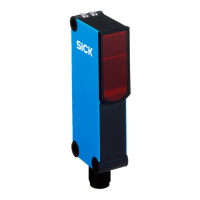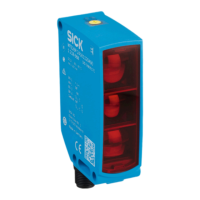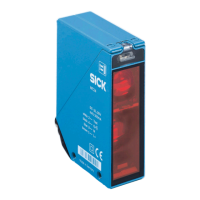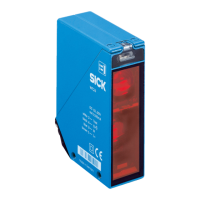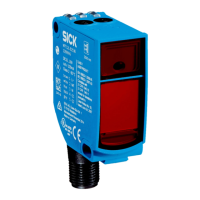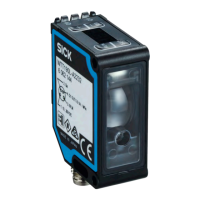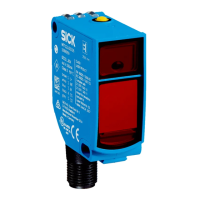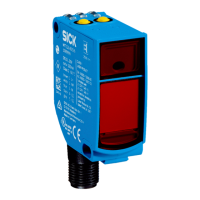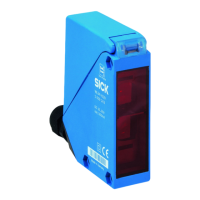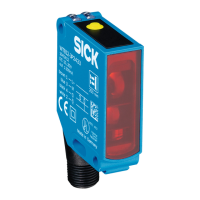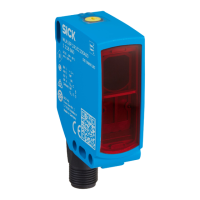The minimum distance (= y) for background suppression can be determined from
diagram [H] as follo
ws:
Example: x = 120 mm, y = 7 => 7 % of 120 mm = 8.4 mm. That is, the background
is suppressed at a distance of > 128.4mm from the sensor.
Image: H
2 Mount the sensor using a suitable mounting bracket (see the SICK range of acces‐
sories).
Note the sensor's maximum permissible tightening torque of 0.8 Nm.
Note the preferred direction of the object relative to the sensor [see A].
3 The sensors must be connected in a voltage-free state (V
S
= 0 V). The information
in the graphics [B] must be observed, depending on the type of connection:
–
Technical data and connection diagrams (figure B) starting on page 57.
– Cable: core color
Only apply voltage/switch on the power supply (V
S
> 0 V) once all electrical connec‐
tions have been completed. The green LED indicator lights up on the sensor.
Explanations of the connection diagram (Graphic B):
Switching outputs Q and /Q (according to Graphic B):
Teach-in = external teach-in (ET) (see Adjustment)
WTB4S-3Exxxx and WTB4S-3Fxxxx
D: dark-switching, output (Q) switches off when an object is present in the sensing
range.
WTB4S-3P1332 and WTB4S-3Px1xx:
WTB4S-3N1332 and WTB4S-3Nx1xx:
WTB4S-3Pxxx4 and WTB4S-3Nxxx4 (Additional ET: teach-in function per cable. Con‐
nect ET cable (pin 2) > 2 s to V
s
(output PNP); connect ET cable (pin 2) > 2 s to M
(output NPN)):
L: light switching, output (Q) switches when an object is present in the sensing
range.
WTB4S-3P1132 and WTB4S-3N1132:
WTB4S-3Px232 and WTB4S-3Nx232:
ANT: complementary outputs Q and Q/
3 C
OMMISSIONING
2
8012136.YM43 | SICK
Subject to chang
e without notice
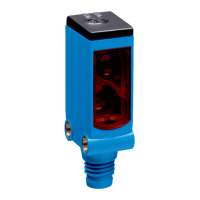
